39 Facts About Storms That Will Make You Run for Cover
Learn all about this mysterious and often dangerous weather phenomenon.
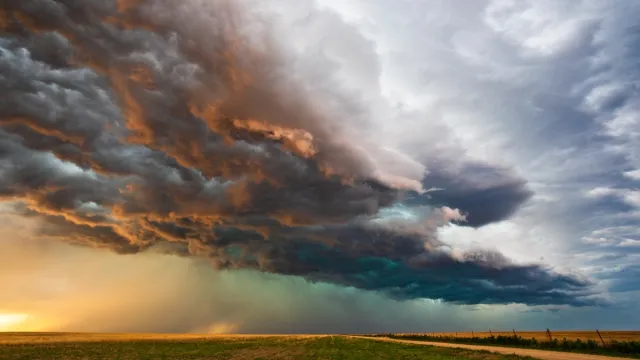
As countless inaccurate weather reports have shown, storms are mysterious, unpredictable things. Most of us would probably have trouble identifying what exactly causes them, and even those whose full-time job is to predict them seem to have a tough time doing so. In addition, storms can be perplexing, awe-inspiring, and even deadly—and there's so much to discover about the weather phenomenon that it's hard to even know where to start. To that end, we've collected 39 interesting facts about storms, from downpours, cloudbursts, and blizzards to deluges, tornadoes, and hurricanes. Read on to learn everything you've ever wanted to know about what happens when the sky opens up.
RELATED: 40 Ocean Facts That Will Blow You Out of the Water.
Fascinating Storm Facts Everyone Should Know
1. A 1995 storm in Texas had hailstones as big as softballs.
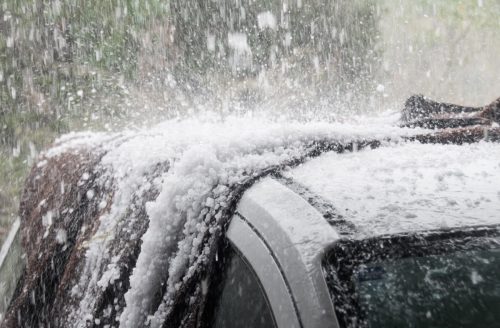
In 1995, a storm hit northern Texas with 70 mph winds and hail as big as softballs, killing at least 15 people and injuring more than 100. It also caused extensive flooding, knocked out power to 16,800 customers, and broke the windows of many buildings and cars. Within one hour, some roads in Fort Worth were buried under two feet of hailstones. Eleven people drowned while trying to escape flooded vehicles, including five members of one family.
2. One blizzard in Iran buried entire villages with no survivors.
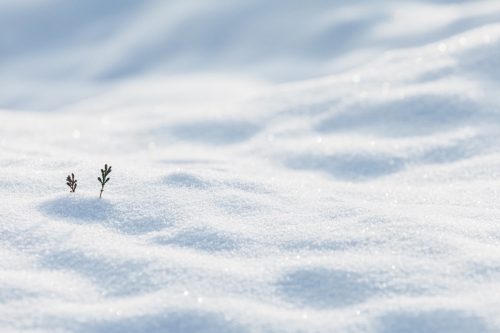
The Iran Blizzard of 1972 is known as the deadliest blizzard in history. The storm lasted a full week, from Feb. 3 to Feb. 9, and resulted in the deaths of approximately 4,000 people. Southern Iran received as much as 26 feet of snow in some places, and about 200 villages were completely buried and wiped off the map, which resulted in no survivors in the outlying areas of the country that were hit the hardest.
3. Blood red rain poured down on India for a summer.

From July 25 through Sept. 23, 2001, red-colored rain fell down on Kerala, India, baffling the entire world. A few days before the blood rain started, people reported a sudden flash of light and booming sound in the sky. People also said that trees shedded shrunken and wrinkled burnt leaves. Scientists found that it was red spores from lichen-forming algae that gave the rain its unusual—and frightening—color.
4. A heat wave in California once turned grapes into raisins.

A heat wave that hit northern California's wine country Labor Day weekend in 2017 straight-up turned grapes into raisins. As temperatures hit up to 109 degrees Fahrenheit, the scorching heat evaporated water from the berries and shut down the vines' entire metabolic process. It was estimated that vineyards lost up to 50 percent of their crop due to the unprecedented temperatures.
Though September heat waves are not uncommon in California wine regions, for one to come that early in the month is highly unusual.
5. Once, Earth got as cold as Mars.

The coldest temperature ever reported was in Antarctica on Aug. 10, 2010. The temperature fell to -135.8 degrees Farenheit, or -94.7 degrees Celsius. That's almost 10 degrees colder than the previous record. As the temperature was captured by satellite, not thermostat, it wasn't able to be included in the Guinness Book of World Records. According to an ice scientist who reported on the incident, the temperature was actually more fitting for Mars than for one of Earth's poles.
6. Approximately 16 million thunderstorms occur each year.
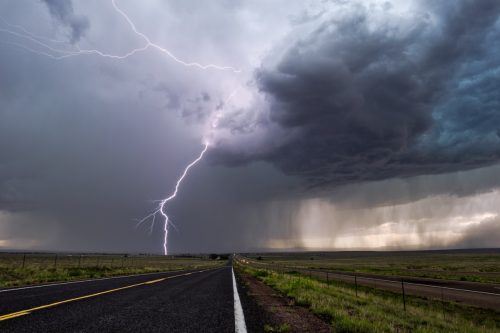
According to the National Weather Service, roughly 16 million thunderstorms hit each year, with upwards of 1,800 storms occurring at any one time. While 100,000 of those storms take place in the United States, only 10 percent are considered severe. These storms are defined as any occurrence that produces winds of 58 miles per hour or more, hailstones that measure 3/4 of an inch or greater, as well as tornadoes. Other threats include dangerous straight-line winds, heavy rain, downed power lines, and deadly lightning.
7. Lightning also occurs on other planets.

Lightning strikes aren't just reserved for Earth. Other planets, including Jupiter and Saturn, experience this kind of weather, too. Scientists have also observed bright flashes in dust storms on Mars, which some interpret as evidence of lightning there as well.
8. A mudslide can move entire buildings.
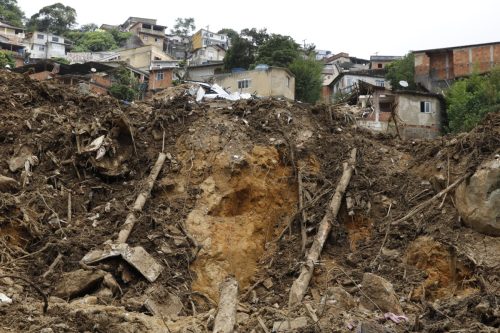
Landslides occur when masses of rock, earth, or debris move down a slope, and mudslides are a common type of landslide that move at a very rapid pace. Mudslides usually start on steep slopes and can be activated by natural disasters, including wildfires or after heavy rains. In the United States, landslides, and mudslides result in 25 to 50 deaths each year and can carry rocks, trees, vehicles, and even entire buildings.
RELATED: 55 Fascinating World Facts You Need to Know.
9. America is the world's tornado capital.
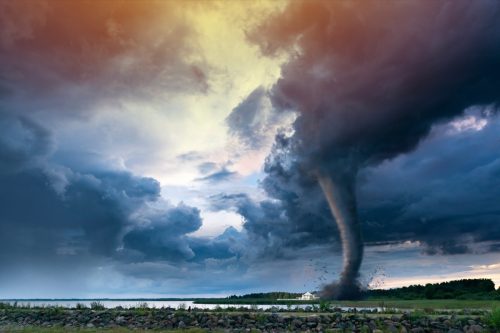
The United States experiences more tornadoes than any other country. Oh, and they're also stronger and more violent than they are anywhere else. The majority form in an area known as Tornado Alley, which includes Texas, Oklahoma, Kansas, South Dakota, Iowa, Missouri, Nebraska, Colorado, North Dakota, and Minnesota. The United States averaged 1,274 tornadoes per year in the last decade, most of which take place in spring. (Tornadoes are least common in winter.) Worldwide, most tornadoes occur in the late afternoon, between 3:00 p.m. and 7:00 p.m., and peak around 5:00 p.m.
10. Greenland is the windiest place on Earth.
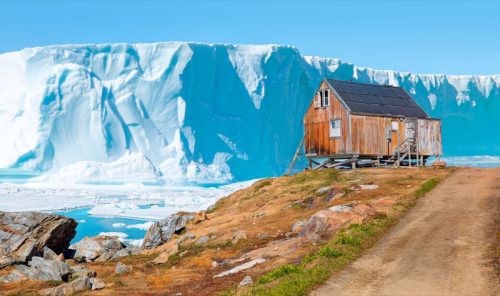
To be more specific, Cape Farewell, Greenland, has been called the windiest place on the planet. According to a researcher who led an expedition there in 2007, the winds are so strong that flying over the region is "stomach-churning." Satellite data shows that winds reach 44.7 mph 16 percent of the year and 29 percent of the winter. It is believed that these strong winds carried Viking explorers from Iceland and Greenland to North America, making them the first Europeans to discover the continent.
11. Mild autumn weather leads to bigger spiders indoors.
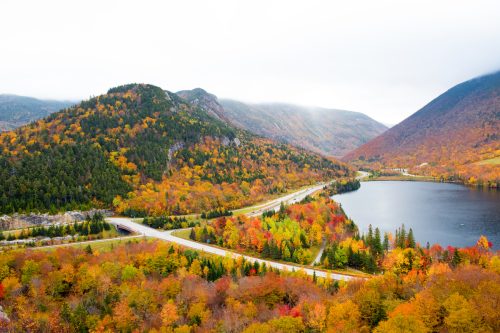
Whenever you have warm fall weather, you can expect to see more spiders around your home. Male spiders mature in mid-to-late summer, leave their webs or holes, and go looking for a mate. It's during this search that you're likely to see them crawling along our walls, windows, furniture, or floors. However, the warmer the fall season, the bigger the spiders get, because there is more prey available than usual. Insects thrive in warm conditions, and that's what spiders feed on.
12. You can calculate how far away you are from lightning.
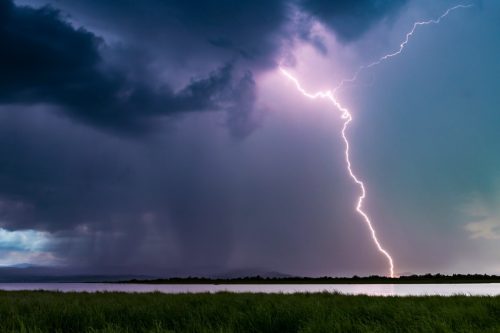
There's a, well, lightning-quick way to figure out how far away you are from a lightning strike. Just count the number of seconds that pass between a flash of lightning and the thunder that follows, then divide that number by five. The result equals how many miles away you are from where lightning just struck. This is called the "flash-to-bang" method. The National Weather Service recommends taking cover if the time between lightning and thunder is 30 seconds or less, which indicates that the lightning is six miles away or closer.
13. There's such a thing as water tornadoes.
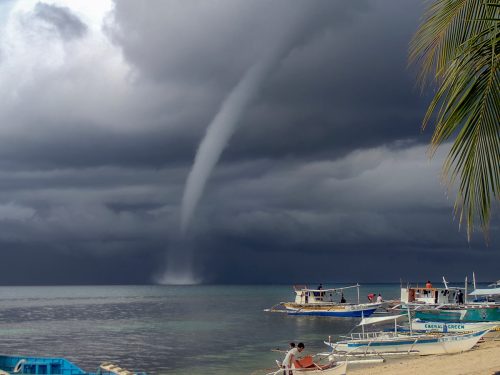
Tornadic waterspouts are what they sound like: A tornado over a body of water. They generally begin over land in connection with a thunderstorm, then move out over the water. Just like tornadoes, they can be very destructive. Waterspouts occur most often in northern Michigan in August, September, and October when the waters of the Great Lakes are at their warmest. They tend to last for two to 20 minutes and move at speeds of 10 to 15 knots.
14. A sandstorm once buried a force of 50,000.
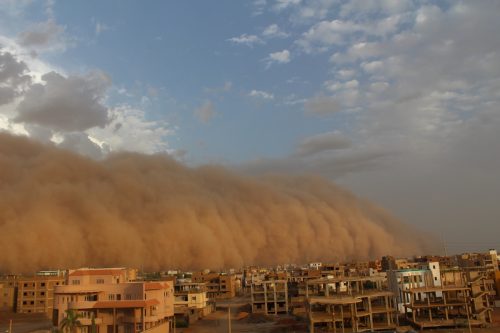
In 525 B.C.E., Cambyses, the son of Cyrus the Great, sent 50,000 soldiers from Thebes to attack the Oasis of Siwa and destroy the Oracle at the Temple of Amun after local priests refused to legitimize his claim to Egypt. After walking for seven days in the desert, the soldiers drowned in a sandstorm. In 2009, bronze weapons, a silver bracelet, an earring, and hundreds of human bones were found by archeologists in the vast desolate wilderness of the Sahara Desert, believed to have belonged to the missing Persian army.
15. Hurricane Andrew led to a python invasion in Florida.
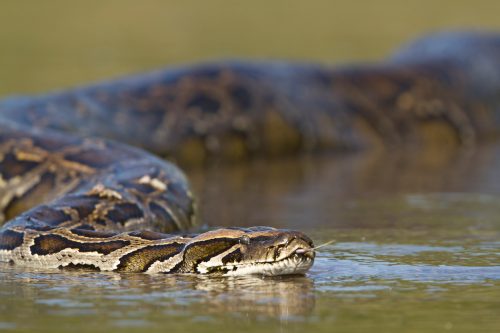
Hurricane Andrew, a Category 5 hurricane, hit Southern Florida on Aug. 23, 1992. Its fierce winds reached 150 miles per hour and demolished many buildings, including a breeding facility for Burmese pythons, and many of them escaped. As a result, today the Everglades are overrun with these giant snakes. Female pythons can lay up to 100 eggs a year, and reproduce rapidly. To help control the burgeoning python population, Florida residents are authorized to catch and kill them by almost any means necessary, with no permit required, especially on private lands.
16. Lightning is insanely hot.
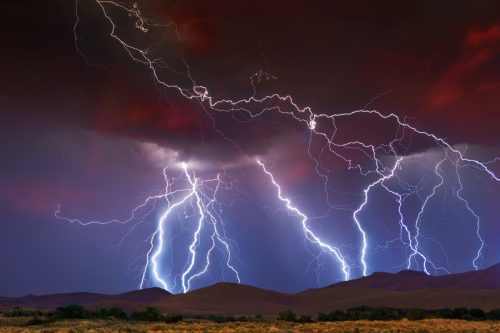
The odds of being struck by lightning are incredibly slim, but people are more likely to die from lightning than other types of storms, not including hurricanes. Lightning strikes kill hundreds of people in the United States each year, and 10 percent of lightning deaths happen in Florida alone. A direct strike is deadly. At 50,000 degrees Fahrenheit, a lightning bolt is five times hotter than the sun's surface. And there are about 55,000 lightning strikes a day in the States. So watch out!
RELATED: 37 Weird Facts About the Human Body That Will Blow Your Mind.
17. The eye of a storm is actually calm and sunny.

The very center of a hurricane is called the "eye." In the eye of a storm, the winds are calm, and it can feel like a peaceful, sunny day. The storm's eye is roughly 20 to 40 miles in diameter. It is surrounded by the eyewall, a ring of towering thunderstorms where the most severe weather and highest winds occur. The hurricane's lowest barometric pressure occurs in the eye and can be as much as 15 percent lower than the pressure outside the storm.
18. Aristotle believed thunder was caused by clouds colliding.
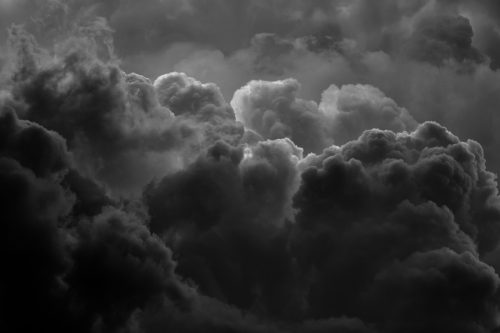
Legendary philosopher Aristotle believed that thunder and lightning are part of a "dry exhalation" from clouds. "If any of the dry exhalations are caught in the process as the air cools, it is squeezed out as the clouds contract, and collides in its rapid course with the neighboring clouds, and the sound of this collision is what we call thunder," he said. He also believed that lightning is the burning of this same exhalation.
19. There's a phobia of lightning and thunder.

Astraphobia is the extreme fear of thunder and lightning. It's not just children and adults who can suffer from this irrational fear—it's a phobia that commonly affects animals and why dogs often howl and hide when they hear thunder.
A person who has astraphobia will frequently check weather forecasts and change their plans if a storm is coming. Like pets, people with astraphobia may even hide in a closet to deal with their fear. Astraphobia can be treated through cognitive behavioral therapy.
20. One tornado has a death toll of nearly 700.
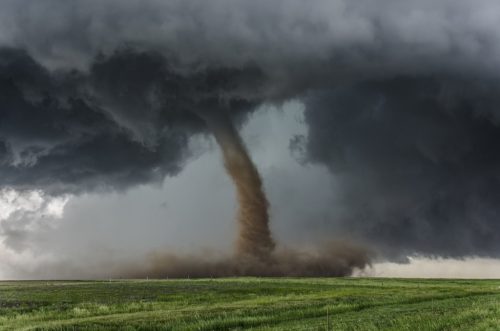
The Tri-State Tornado on March 18, 1925 was the deadliest in U.S. history. It caused 695 deaths, more than twice the amount of fatalities of the second deadliest tornado, which took place in Mississippi in 1840. The 151- to 235-mile track left by the tornado was the longest ever recorded in the world; it crossed from southeastern Missouri, through southern Illinois, and then into southwestern Indiana. Though it was not officially rated at the time, it's recognized today as an F5 tornado, the maximum damage rating issued on the Fujita scale.
21. Some storms are more powerful than atomic bombs.

Hurricanes are extremely powerful and pack as much energy as a 10-megaton nuclear bomb.
Hurricanes get their power from the condensation of warm ocean water. Condensing moisture in a low-pressure region releases energy, which heats the air. Then, the moist air rises and pulls in more air from outside toward the center, creating a devastatingly powerful cycle. A hurricane can continue for many days over open water, building up power. Then, when it hits land, the lack of moisture and increased friction will slow it down a bit—but not before it can cause mass destruction and loss of life.
22. Bigger cities create more severe thunderstorms.

Research has found that the extra heat generated around cities makes thunderstorms more intense. This is known as the Urban Heat Island effect. Heat from common activities such as driving cars and the vast amount of heat-absorbing concrete in big cities leads to warmer air. This extra heat causes hot and humid air rising to form clouds and thunderstorms. In fact, one study found that rainfall in Phoenix increased by 12 to 14 percent as the city's population grew.
23. Yes, lightning can strike the same place twice.
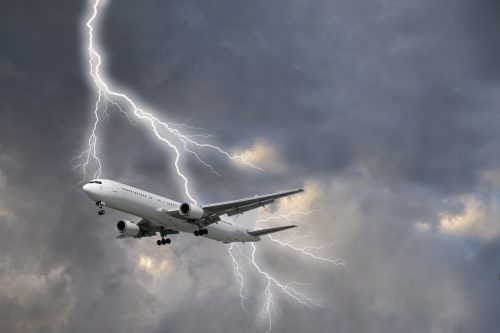
The phrase "lightning never strikes the same place twice" is a total myth. The reality is that lightning can and will strike the same place twice, whether during the same storm or centuries later. There is a significant attraction between the lightning bolt and the place it previously hit, so it's actually more likely that it would be struck again. Skyscrapers like the Empire State Building are almost guaranteed to be struck by lightning each time a thunderstorm passes overhead. Luckily, such structures generally have built-in lightning rods to make sure no damage is done to the building.
24. The majority of Americans believe global warming is real.
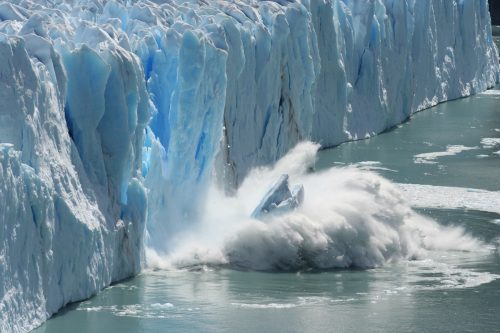
According to a 2021 survey conducted by the Yale Program on Climate Change Communication, 72 percent of Americans now accept that climate change is happening, which is a seven percent increase from 2015. More than half the respondents (57 percent) said they understand that global warming is caused mostly by human activities. The survey also showed that more Americans are connecting global warming with extreme weather events, with 64 percent reporting that they believe climate change is affecting the weather. And 46 percent said that they have personally experienced the effects of climate change.
25. It can rain animals.

"Raining animals" is a rare but real meteorological phenomenon when animals fall from the sky. But, before you let your imagination run wild, "raining cats and dogs" isn't what happens. Instead, you'll just get pummeled with fish and frogs.
Such occurrences have been reported in many countries throughout history. One hypothesis is that tornadic waterspouts can pick up small animals, such as fish or frogs, and carry them for several miles. Sometimes the animals survive, as witnesses have described them as startled but healthy and showing normal behavior shortly after. In some incidences, the animals have been frozen or even completely encased in ice. There have also been cases where the rain consisted of shredded animal body parts.
RELATED: 54 Hilarious and Random Facts You'll Want to Tell Your Friends.
26. Pine cones can be used to forecast rain.

Pine cones open and close depending on the humidity to help their seeds disperse. Light seeds are contained inside the pine cone. When the weather is dry the pine cone opens up, so wind can catch the seeds and allow them to be dispersed in the air far away from the original tree. When humidity rises and rain is coming, the pine cone closes up to prevent the seeds from escaping and becoming waterlogged.
27. And balloons can help predict other kinds of weather.

The National Weather Service uses balloons to track the weather from 900 different locations around the world. These devices, made of latex or neoprene, are released every day, twice a day. The flights typically last around two hours, though the balloons get almost 125 miles away during this time, and drift up to over 100,000 feet in the atmosphere. They are engineered to monitor weather patterns surrounding air pressure, temperature, humidity, wind speed, and more.
28. Lightning struck and killed an entire soccer team but left the opposing team untouched.

On Oct. 28, 1998, a freak blast of lightning struck an entire soccer team in the African state of Congo during a match, while their opponents were left completely unharmed. All 11 team members, aged from 20 to 35 years old, lost their lives, while members of the home team were untouched. Many soccer fans blamed witchcraft for the bizarre incident because, incidentally, the score was tied at the time of the deadly lightning strike.
29. Most U.S. tornado warnings are false alarms.

On average, 70 percent of tornado warnings issued in the U.S. are false alarms. This means that only three in 10 tornado warnings predicted a verified tornado within the warned area during the time of the notice. In an attempt to lessen this false alarm problem, lead times for tornado warnings have decreased from 13 to 14 minutes, at the beginning of the decade, to around eight to nine minutes in 2017. National Weather Service forecasters now tend to wait until a tornado has begun before issuing a warning.
30. One hurricane lasted an entire month.
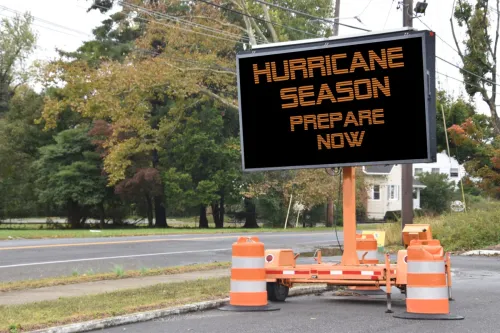
Hurricane John, also known as Typhoon John, was both the longest-lasting and the farthest-traveling cyclone ever recorded (though Hurricane Freddy isn't far behind). John formed in 1994 and peaked as a Category 5 hurricane. John traveled 7,165 miles from the eastern Pacific to the western Pacific and back to the central Pacific, lasting 31 days in total. Despite enduring for a full month, John barely hit any land and only minimally affected the Hawaiian Islands and the U.S. military base on Johnston Atoll.
31. Tropical storm names are determined before hurricane season even begins.
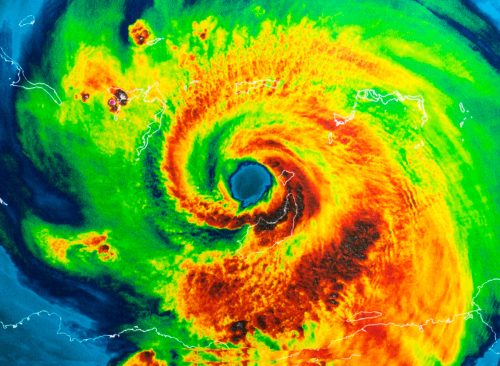
Tropical storms are given names from a pre-determined and pre-approved list by the World Meteorological Organization (WMO). There is a naming system in place, where names can only be repeated after six years. However, if a storm causes large amounts of destruction, that name is retired permanently and a new name starting with that letter is added to the list. This system was invented to easily distinguish different storms happening at the same time in different parts of the world.
32. Once, wind bent the goalposts during an NFL game.

On Dec. 28, 2008, a windstorm caused a lot of damage during a New England Patriots vs. Buffalo Bills game. Winds at 75 mph tore a strip off the Buffalo Bills' practice field house across the parking lot from the stadium and tilted both goalposts inside the stadium. Work crews had to use ropes and a forklift to re-secure and re-center the goalposts, which shook heavily in the wind. The winds also tore off part of a goal post on the Bills' outdoor practice field next to the field house.
33. It's only snowed in Florida once.
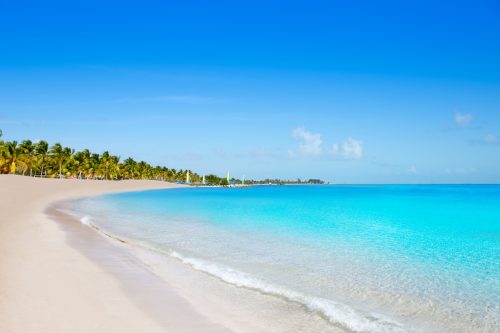
Jan. 19, 1977 goes down in history as the only time that Florida has ever received snow. The moment the stuff hit the ground, it quickly dissipated. Yet many residents of the Sunshine State remember it as a blizzard.
When the snow started to fall, as far south as Homestead, thousands of residents ran outside to see and feel it. Some motorists pulled to the side of the road in wonder, and teachers allowed schoolchildren to go out and feel snowflakes on their faces.
RELATED: 46 Airplane Facts You Should Know Before Booking Your Next Trip.
34. Yes, there's such a thing as "thundersnow."
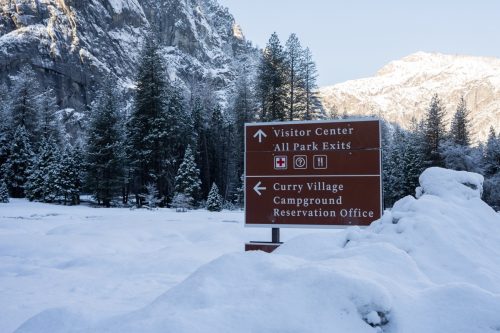
Thundersnow isn't a spell from a fantasy novel. No, it's a rare winter weather phenomenon that's most common near large lakes. When relatively warm columns of air rise from the ground and form turbulent storm clouds in the sky in the winter, there's potential for thundersnow. A few other factors are necessary for it to occur, including air that's warmer than the cloud cover above it, and wind that pushes the warm air upwards. However, you may not even know thundersnow is happening, because lightning is harder to see in the winter and the snow can dampen the sound of thunder.
35. Cities can get really creative with snow disposal.
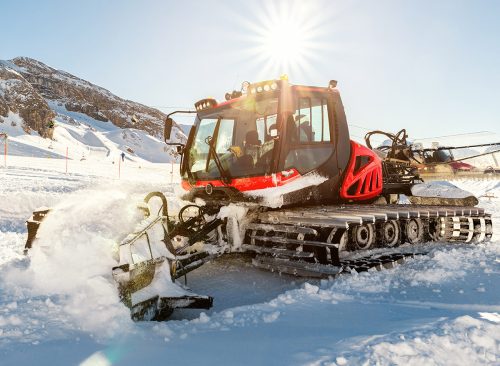
After snowstorms and blizzards, where does the snow go? Different cities employ various snow disposal methods. Many haul it away to parking lots or other open spaces where it can sit until the weather warms up and it melts. During particularly snowy seasons, some cities are forced to dump snow in the ocean. Others use snow melter machines, which melt 30 to 50 tons of snow an hour with hot water. This method is quick but costly—a single machine can be priced at $200,000.
36. Most people struck by lightning will survive.
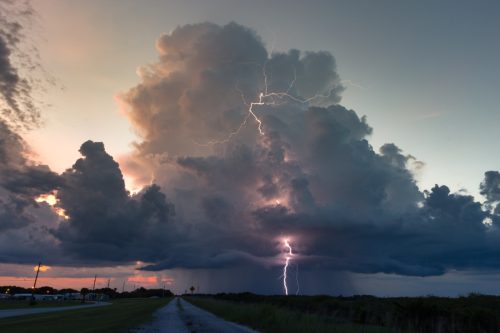
About 2,000 people are killed around the world by lightning each year. However, hundreds more survive strikes but suffer from a variety of lasting complications, including memory loss, dizziness, weakness, numbness, and other life-altering ailments. Lightning strikes can cause cardiac arrest and severe burns, but the fact is that 90 percent of people survive. That's good news, since the average American has about a one in 5,000 chance of being struck by lightning during their lifetime.
37. There's no such thing as heat lightning.
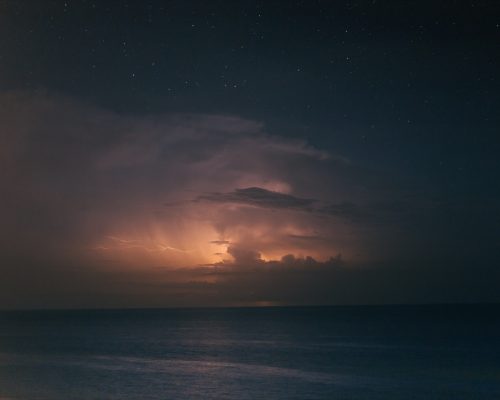
While many of us grew up believing that heat lightning referred to a specific type of lightning, the term actually refers to lightning that is too far away for us to see the ground strike. In other words, it's lighting caused by a distant thunderstorm. Mountains, hills, trees, and even the curvature of the earth can also prevent observers from witnessing a lightning flash.
38. Hurricanes are known by different names in different parts of the world.
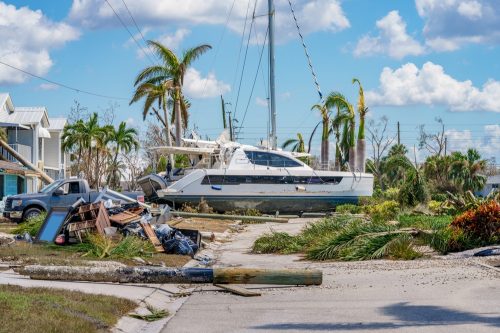
We've all heard of hurricanes, but what about typhoons? Or cyclones? Well, what if we told you these were all different terms for the same kind of storm? We call them hurricanes here in the United States, but people in the Northern Pacific and the Philippines call them typhoons. In India and the South Pacific, they're known as cyclones.
39. The most dangerous thing about hurricanes is the flash floods they create.
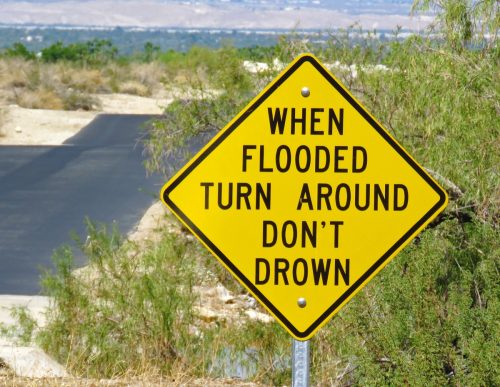
There are lots of different dangers to anticipate when a storm hits, from damaging winds to broken glass and much more, but nothing poses as big of a threat as the flash floods they create. Many people attempt to flee the area by car, but this is actually how most flash flood deaths occur. The National Weather Service has even launched a campaign called "Turn Around, Don't Drown" to discourage people from driving through flooded roadways.
Wrapping Up
That's it for our list of storm facts, but be sure to check back with us soon for even more trivia. You can also sign up for our newsletter so you don't miss out on what's next!
- Source: https://www.nasa.gov/content/goddard/nasa-usgs-landsat-8-satellite-pinpoints-coldest-spots-on-earth
- Source: https://www.weather.gov/key/tstmhazards
- Source: https://science.nasa.gov/science-news/news-articles/lightning-across-the-solar-system
- Source: https://science.nasa.gov/science-news/news-articles/lightning-across-the-solar-system
- Source: https://cdc.gov/disasters/landslides.html
- Source: https://www.weather.gov/apx/waterspout
- Source: https://www.loc.gov/everyday-mysteries/meteorology-climatology/item/can-it-rain-frogs-fish-and-other-objects/
- Source: https://www.weather.gov/bmx/kidscorner_weatherballoons
- Source: https://www.weather.gov/safety/lightning-heat
- Source: https://oceanservice.noaa.gov/facts/cyclone.html
- Source: https://www.weather.gov/pbz/floods





















